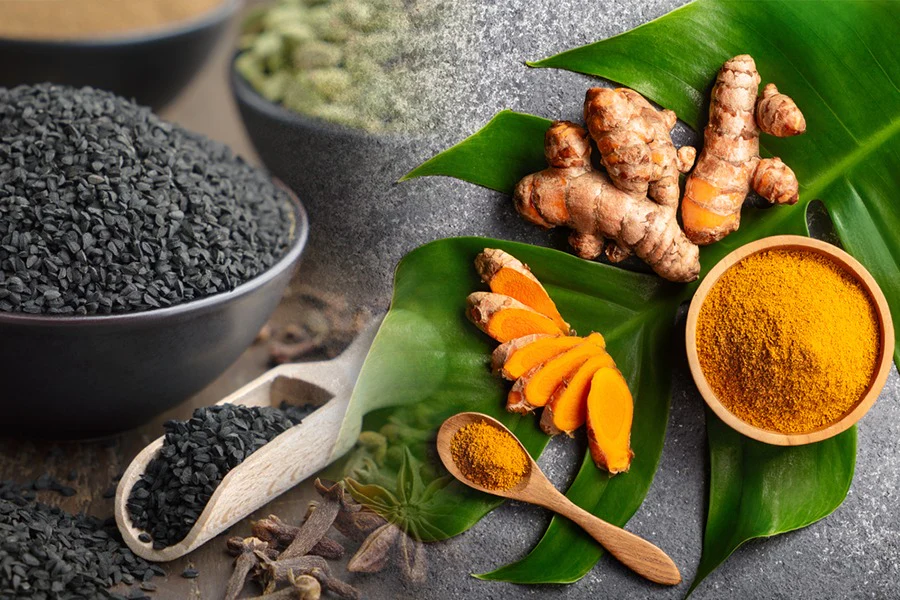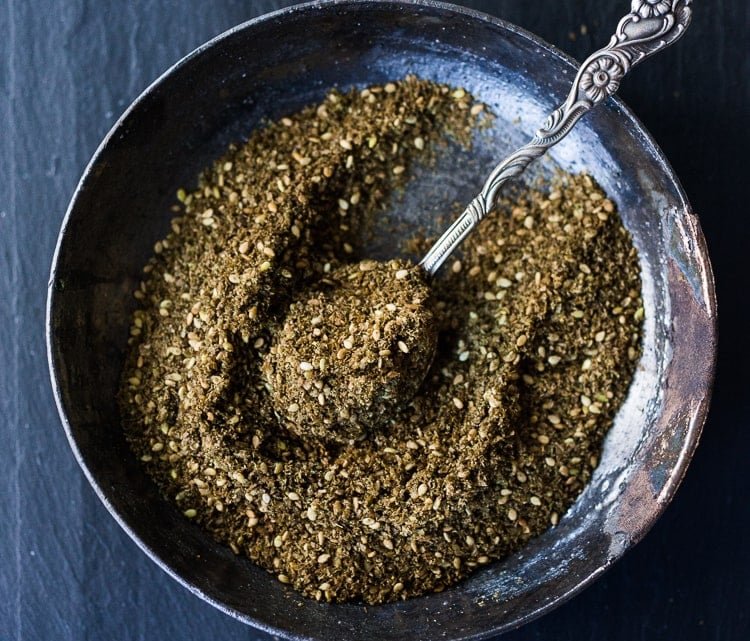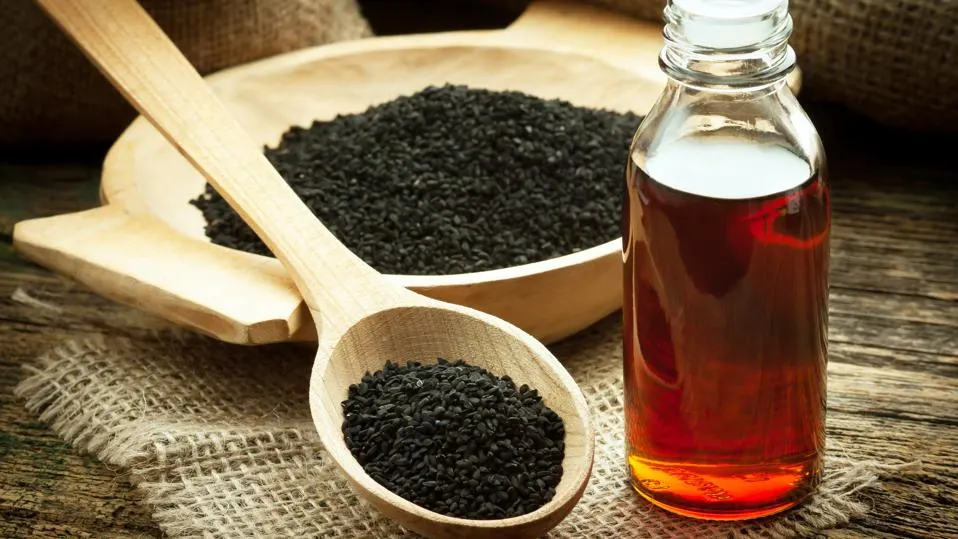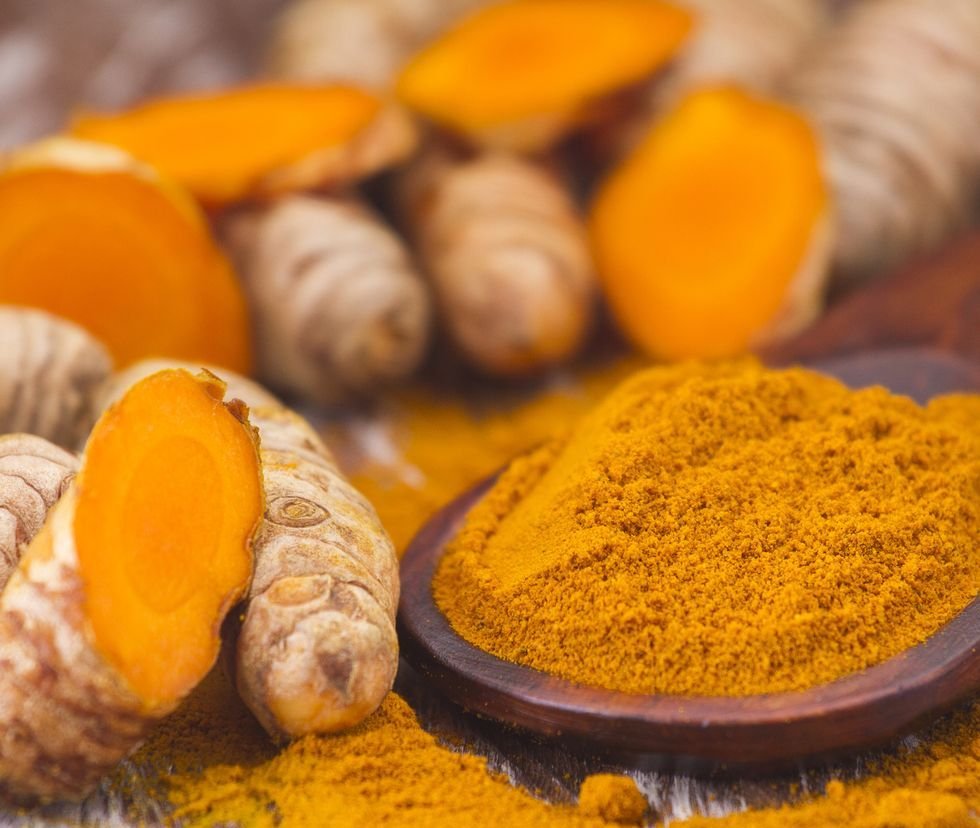Foods from Ancient Times with Miraculous Health Benefits

The Vigilant Citizen posted an article detailing foods from ancient times that aren’t as popular today, but contain remarkable health benefits. Today potential cures have been replaced with feel good medications. It is nice to feel good, but when the feeling wears off then what?
With all the technological advances, the overall health of the population is steadily decreasing. Why is that? The food that we eat is a big factor in our health. The problem is that it takes an extra effort to eat healthy because foods that try to use health as a selling point typically aren’t healthy. If the company is for profit, they will cut corners to increase profit, and it’s not as healthy as it should be.
3 Foods from Ancient Times with Miraculous Benefits
Consumed for thousands of years in various parts of the world, these three simple foods were revered by ancient civilizations for their healing powers. Today, modern science is proving these civilizations right, yet they are still relatively unknown in the Western world. Here are three foods you need to know about.
Being a Vigilant Citizen is not only about being aware of what goes into your mind, it is also about being aware of what enters your body. If your body is fueled with toxic garbage, your brain will also run on toxic garbage. And when your brain runs on toxic garbage, it becomes slow, cloudy, and enjoys listening to Pitbull.
In my series of articles, Dumbing-Down Society, I list some toxic elements found in everyday products that we all need to avoid. This article, however, is about the exact opposite. It is about foods we all need to consume on a regular basis. The three foods in this article have been revered for thousands of years for their incredible healing proprieties and modern science is slowly confirming these ancient claims. Not only can these foods cure ailments, they can be used as supplements to improve the immune system, brain function and general well-being.
Ancient civilizations did not praise these foods for the heck of it. They observed, for thousands of years, the various effects these foods had on the mind, the body and even the soul. Ancients were so in awe about their proprieties that they obtained special statues: they were perceived as gifts from above, they were celebrated in ceremonies, and Kings were buried with them. So, without further ado, here are three ancient foods you need to know about right now.
Zaatar

When I was a snotty little kid running around the house getting hungry, I used to go up to my mother, interrupt whatever she was doing and demand food. And, very often, I got the same snack: Zaatar mixed with olive oil inside a pita bread (that’s what you get when your parents are Lebanese immigrants). As I got older, I understood why I was given this wrap all the time. First, it took about 30 seconds to make; second, it’s the cheapest lunch in the history of the world (it costs about 26 cents to make); third, it tastes pretty good. Finally, it is a natural, wholesome food that is packed with important nutrients.
Zaatar is a mix of spices that is mainly consumed in the Middle East. While each region has its trademark take on it, zaatar usually consists of the same basic ingredients: Dried thyme, oregano, marjoram, sumac, toasted sesame seeds and salt.
Zaatar has been part of the Mediterranean diet for thousands of years. It was consumed in Ancient Egypt and, throughout history, has remained a staple credited with various healing properties.
There is evidence that a za’atar plant was known and used in Ancient Egypt, though its ancient name has yet to be determined with certainty. Remains ofthymbra spicata, one variety used in modern za’atar preparations, were found in the tomb of Tutankhamun, and according to Dioscorides, this particular species was known to the Ancient Egyptians as saem.
Pliny the Elder mentions an herb maron as an ingredient of the Regale Unguentum (“Royal Perfume”) used by the Parthian kings in the 1st century CE.
In Jewish tradition, Saadiah, Ibn Ezra (d. circa 1164), Maimonides (1135–1204) and Obadiah ben Abraham (1465–1515) identified the ezov mentioned in the Hebrew Bible with the Arabic word “za’atar”. Ezov/za’atar is particularly associated with ritual purity ceremonies, such as preparing the ashes of the Red Heifer (Numbers 19:6) and handling bodily contaminations (Leviticus 14:4, 6, 51-52; Numbers 20:18).
– Lise Manniche. An ancient Egyptian herbalist
As stated above, the renowned 12th Century philosopher, astronomer, and physician Maimonides was a big fan of zaatar. He regularly prescribed it to his patients to cure various ailments and to “open the mind”. Recent studies all tend to confirm these claims, as zaatar has proved to be a powerful antiseptic (it kills nasty things in your body) and a potent “brain food”. Here are some of the proprieties of each ingredient found in zaatar.
Sumac Health Benefits
Sumac is rich in gallic acid, which research suggests has anti-fungal, anti-viral, and cancer-fighting properties, and quercetin, which also seems to an anti-inflammatory agent effective against cancer.
A 2009 study also suggested that sumac can protect DNA from errors during cell reproduction in animals, though research on human cells was inconclusive.
Thyme and Oregano Health Benefits
Thyme and oregano are both rich in thymol and carvacrol, similar organic compounds called phenols that have antiseptic and antimicrobial properties. Like gallic acid, they are also effective in suppressing funguses and other microorganisms.
A 2010 study found that thymol and carvacrol can weaken drug-resistant strains of disease-causing bacteria like Salmonella and Staphylococcus aureus, making the microbes more susceptible to antibiotics.
In lab tests, the antioxidants in thyme were even powerful enough to fight off acne-causing bacteria.
A fluid extract of thyme also helped patients with acute bronchitis and phlegmy coughing fits minimize their respiratory symptoms — which, as The Salt notes, echoes Maimonides’ prescription of za’atar to treat colds.
Brain-Boosting Za’atar?
In certain parts of the Middle East, folk tradition suggests that za’atar has brain-boosting properties – The Salt recounts that Syrian children are often encouraged to sprinkle the spice mix on meals before exams.
Scientific literature on the health benefits of za’atar herbs like thyme, oregano, and sumac for human intelligence is minimal, though some researchers are beginning to speculate that the carvacrol, the phenol found in thyme and oregano, may have cognitive and mood-enhancing properties, at least in rodents.
A 2011 study found that in mice, specific doses of an oregano extract elevated levels of serotonin, a vital brain neurotransmitter involved in regulating mood, learning, sleep, and appetite, working like a low-impact version of the selective serotonin reuptake inhibitor (SSRI) drugs that are commonly prescribed as antidepressants in humans.
Another study published last month showed that when fed to rats, steady low doses of carvacrol can boost levels of serotonin and dopamine, which is also involved in mood, learning, and feelings of reward, possibly increasing feelings of well-being and reinforcing other positive brain processes.
Finally, a 2012 study found that in rats, thymol and carvacrol helped alleviate some symptoms of dementia caused by beta-amyloid, a protein linked to Alzheimer’s disease. When dosed with the compounds before being placed in a water maze, cognitively impaired rats learned how to navigate the labyrinth more quickly than expected.
Let’s forget about rats eating zaatar for a second and focus on the great minds who were fueled on it instead. If zaatar was good enough for Egyptian pharaohs, the Bible and renowned philosophers, it is probably good enough for you.
How to get and consume zaatar
Zaatar can be found in most markets selling products from the Middle East. You can also order it online through Amazon – this one is pretty authentic
You can also buy each spice that make up zaatar separately and create your own blend.
Zaatar can be sprinkled on dairy products, vegetables and meats to add flavor. It is however at its best when mixed with its long time partner: olive oil. I personally like to spread some zaatar and olive oil on whole wheat bread, and then add a slice of tomato and some feta cheese. Nice.
Black Seed Oil (aka Nigella Sativa Oil)

Although black seed oil has been praised for thousands of years for its incredible healing properties, it gets little to no love in the Western world. However, scientific research is shedding light on this seed’s awesome powers and is gradually confirming what ancient cultures claimed for thousands of years: Black seed oil is a miracle worker. Considered to be an “elixir of life” and the “most powerful oil in the world”, black seed oil built its reputation over thousands of years of use across various cultures.
Black Cumin Seed (Nigella Sativa) oil has been used in traditional medicine since the beginning of civilization. It was called Panacea (which roughly translates to ‘cure-all’) in Ancient Egypt; it was found in the tomb of King Tut and it is said that Cleopatra used it as a beauty treatment. Hippocrates, the famous Greek physician, used it to cure digestive and metabolic disorders. The Prophet Muhammad called it “a remedy for every illness except death.”
The oil has also been recommended by practitioners of Ayurveda and Chinese Traditional Medicine for thousands of years for conditions from diabetes to indigestion to cancer. In recent years, it has been put to the test of modern science and several studies confirm its long reported health benefits.
– Natural Living Idea, “Black Cumin Seed Oil: The Most Powerful Oil In The World?”
Black seed oil has been used by ancient cultures to cure and to prevent pretty much anything – from common colds to life-threatening cancers. Science is now confirming these claims.
Nigella Sativa has been involved in hundreds of studies regarding health, and particularly cancer treatment and prevention. One of its active ingredients, Thymoquinone, has been found to be particularly effective in reducing the size of existing tumors. In studies on rats and humans, researchers found that Black Cumin Seed Oil:
- Inhibited tumor growth by up to 50%
- Increased the growth of healthy bone marrow cells by 250%
- Helps to protect the body against damage from chemotherapy and radiation
- Has strong anti-bacterial and anti-inflammatory properties
- Aides in the production of natural interferon
- Can even deactivate or kill certain types of cancer cells
– Ibid.
Although that is pretty impressive, black seed oil is most useful when it is consumed on a daily basis to improve health and to prevent illnesses from even appearing. The “magic” ingredient in black seed oil is called crystalline nigellone, a compound that is relatively rare in nature and difficult to synthesize. Black seed oil also contains Beta Sitosterol, Calcium, Copper. Folic Acid. Iron, Oleic, Linoleic and Linelenic Acids (Omegas 3 & 6), Palmitol, Phosphorous, Protein, Stearic Acid, Thymoquinone, Vitmins B1, B2 & B and Zinc. All of these ingredients contribute in maintaining optimal health.
Overall, the greatest benefit of Black Cumin Seed is its effect on the immune system and metabolism – which, in turn, supports all the functions of the body. The active compounds in the oil have been proven to fight several diseases by naturally boosting the body’s production of immune cells, bone marrow, and natural interferon. It also protects the liver (your body’s filtering system) from toxicity. Even for people in the best health, regular supplementation with Black Cumin Seed Oil can greatly increase their overall sense of health and well-being.
Some of the many conditions successfully treated with regular ingestion of Black Cumin Oil, over an extended period of time (6 months or more), include:
Allergies and Sinusitis
Anxiety and Nervous Tension
Bronchitis
Colds and Flus
Colic (babies)
Diabetes
Diarrhea, Indigestion and Heartburn
Hair Loss
Headaches and Migraines
High Blood Pressure
Insomnia
Intestinal Parasites
Lethargy and Depression
– Ibid.
How to Get and Consume Black Seed Oil
Black seed oil can be found in markets specializing in Mediterranean and North African products. It is however rather difficult to find in some areas. For this reason, I found it easier to order the oil online – this brand is one of the most authentic
No matter what brand you buy, make sure the oil is 100% pure, cold pressed and its color resembles dark honey. Oils that are too light (like vegetable oil) might have had important nutrients filtered out.
For general well-being, it is recommended to take one teaspoon of oil in the morning, one hour before breakfast. For therapeutic purposes (if you’re sick) a second teaspoon in the evening is recommended. The taste is somewhat nasty, but you’ll eventually get used to it. After about week of using this magical oil, you’ll feel a noticeable boost of energy and you’ll feel pretty sharp. If you don’t believe me, go back in time and ask King Tut, Cleopatra, Hippocrates, and the Prophet Mohammad. They’ll tell you.
Turmeric Powder

Turmeric powder is a staple in Indian cuisine and is often found in curry-based recipes. Although it is relatively easy to find in supermarkets, most Westerners are not taking advantage of this spice’s incredible healing powers. This situation is unfortunate because turmeric is a potent antidote to the many ills resulting from our modern lifestyle characterized by poor diet, contact with toxic chemicals and heavy pollution.
The most well known medicinal action of turmeric is its use as a powerful anti-inflammatory, the effectiveness of which is comparable to pharmaceutical medicines. However, it also acts as an alternative, analgesic, antibacterial, anti-inflammatory, anti-tumor, anti-allergic, anti-oxidant, antiseptic, antispasmodic, astringent, carminative, cholagogue, digestive, diuretic, stimulant, and vulnerary . Modern science is beginning to recognize and understand the amazing healing qualities of turmeric and much research is currently being conducted.
– Lisa Gallant, Turmeric : “The Golden Goddess”
There is nothing new about the usage of turmeric – its healing powers have been known since the dawn of civilization. Turmeric has been used for centuries in Ayurveda, the 5,000 year old natural healing system of India. In Ayurveda, turmeric is believed to balance the three doshas, the three bodily humors that make up one’s constitution (named vata, pitta, and kapha).
It was around 500 BCE that turmeric emerged as an important part of Ayurvedic medicine. Ayurveda is an ancient Indian system of natural healing that is still practiced today. Ayurveda translates to “science of life”– ayur meaning “life” andveda meaning “science or knowledge.” Inhaling fumes from burning turmeric was said to alleviate congestion, turmeric juice aided with the healing of wounds and bruises, and turmeric paste was applied to all sorts of skin conditions – from smallpox and chicken pox to blemishes and shingles. Ayurvedic literature contains over 100 different terms for turmeric, including jayanti, meaning “one who is victorious over diseases,” and matrimanika, meaning “as beautiful as moonlight.”
In Indian culture, the importance of turmeric goes far beyond medicine. The Hindu religion sees turmeric as auspicious and sacred. There is a wedding day tradition in which a string, dyed yellow with turmeric paste, is tied around the bride’s neck by her groom. This necklace, known as a mangala sutra, indicates that the woman is married and capable of running a household. The tradition still continues in Hindu communities and has been compared to the Western exchange of wedding rings. In parts of southern India, a piece of the turmeric rhizome is worn as an amulet for protection against evil spirits.
– Lisa Gallant, “Turmeric, the Golden Goddess”
In India, turmeric has been used traditionally for thousands of years as a remedy for stomach and liver ailments, as well as topically to heal sores, basically for its supposed antimicrobial property. In the Siddha system (since around 1900 BCE) turmeric was a medicine for a range of diseases and conditions, including those of the skin, pulmonary, and gastrointestinal systems, aches, pains, wounds, sprains, and liver disorders. A fresh juice is commonly used in many skin conditions, including eczema, chicken pox, shingles, allergy, and scabies
– Siri-Ved Kaur Khalsa, “Turmeric, the Golden Healer”
Recent studies are not only confirming what Ancients believed about turmeric, they are also discovering several applications for modern ailments. Here’s a quick summary of the properties attributed to turmeric by modern science.
- A Potent, Yet Safe Anti-Inflammatory
- An Effective Treatment for Inflammatory Bowel Disease
- Relief for Rheumatoid Arthritis
- Help for Cystic Fibrosis Sufferers
- Cancer Prevention
- Inhibits Cancer Cell Growth and Metastases
- Turmeric and Onions May Help Prevent Colon Cancer
- Turmeric Teams Up with Cauliflower to Halt Prostate Cancer
- Reduce Risk of Childhood Leukemia
- Improved Liver Function
- Cardiovascular Protection
- Lowers Cholesterol
- Protection against Alzheimer’s Disease
– whfoods.com, Turmeric
Yup, that’s a pretty hefty list … and the research has barely started.
How to Get and Consume Turmeric
Due to the surge of popularity of Indian food, most supermarkets now carry turmeric powder. If you live close to a market selling South East Asian products, you can probably buy a bucketful of the spice for about a nickel. You can also order it only through sites like Amazon – this one is pretty good
Turmeric can be consumed in a variety of ways, but, due to its peculiar taste, I do not suggest adding it where it doesn’t belong. Turmeric is right at home in soups, curries or tossed with rice and vegetables. Make sure to add black pepper to your recipes as it is known to improve the bioavailability of turmeric, making it even more effective. You can also simmer turmeric with honey, ginger and lemon to make the world’s healthiest beverage.
In Conclusion
Zaatar, black seed oil, and turmeric powder were considered to be true miracle workers by ancient civilizations for millennia because, like miracle workers, they have the power to heal. They also improve general health by cleansing the body, sharpening the mind and nourishing the soul. Unfortunately, instead of benefiting from these affordable gifts from nature, many resort to swallowing pills made by profit-driven pharmaceutical companies to feel better. Some of the pills sold on TV have horrible side effects such as “suicidal thoughts”. If a pill makes your brain want to kill itself as a “side effect”, maybe it’s a sign from the universe that you should not be taking this pill. The side-effects of the three foods in this article? You feel better and you’re in a better mood. That’s the universe telling you that you should eat these foods … and thousands of years of experience, wisdom and knowledge agree.








